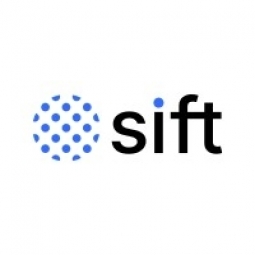公司规模
SME
地区
- America
国家
- United States
产品
- Cozy Platform
技术栈
- Sift
实施规模
- Enterprise-wide Deployment
影响指标
- Cost Savings
- Customer Satisfaction
技术
- 平台即服务 (PaaS) - 连接平台
适用功能
- 商业运营
用例
- 欺诈识别
服务
- 系统集成
关于客户
Cozy is a Portland, Oregon-based startup that offers a platform to streamline interactions between property managers and renters. Using this consolidated system, renters can connect with landlords, apply for properties, and pay their rents through the simple web interface, accessible on desktop or mobile. On the landlord side, Cozy makes recurring payments and property management simple and automatic. Additionally, the platform allows property managers to market their rentals and screen their prospective tenants online. With a commitment of making renting easy for everyone involved, Cozy processes close to $1 billion in rental payments every year. The company boasts 350,000+ property managers, landlords, and tenants in cities throughout the United States.
挑战
Cozy, a startup that offers a platform to streamline interactions between property managers and renters, was facing a significant challenge with fraud. With listings and renters in 13,000 cities nationwide, the company was experiencing both payment fraud and content abuse in the form of fake rental listings. Fraudsters were using fake rentals to ask for wire deposits from unsuspecting renters. As the company expanded its payment options beyond ACH to credit card, the problem only grew. Cozy needed a solution that could keep up with their wide user base and prevent fraud before it resulted in losses.
解决方案
Cozy brought on Kevin Collins and leveraged his experience in tracking fraud with online communities. Kevin pushed for a machine learning solution that could scale with the business and be predictive in its modeling. After trying a few different solutions that didn’t work for Cozy, Kevin found Sift. He was able to demonstrate Sift’s immediate value to the company, and a quick integration followed. Now, although business has grown, fraud rates have remained low. Kevin is efficient in his fraud management, automating based on Sift Score. When further investigation is required, he can do so effortlessly with the Sift Console, where he explores connected accounts and account activity.
运营影响
数量效益

Case Study missing?
Start adding your own!
Register with your work email and create a new case study profile for your business.
相关案例.

Case Study
Largest Production Deployment of AI and IoT Applications
To increase efficiency, develop new services, and spread a digital culture across the organization, Enel is executing an enterprise-wide digitalization strategy. Central to achieving the Fortune 100 company’s goals is the large-scale deployment of the C3 AI Suite and applications. Enel operates the world’s largest enterprise IoT system with 20 million smart meters across Italy and Spain.

Case Study
KeyBank's Digital Transformation with Confluent's Data in Motion
KeyBank, one of the nation's largest bank-based financial services companies, embarked on a national digital bank initiative following the acquisition of Laurel Road, a digital consumer lending business. The initiative aimed to build a digital bank focused on healthcare professionals looking to refinance student loans and buy homes. A significant challenge was reducing the time to market for new products by democratizing data and decoupling systems across the IT landscape. Like many large enterprises, KeyBank had a variety of vendor applications, custom applications, and other systems that were tightly coupled to one another. New projects often required developing specific point-to-point integrations for exchanging data, which did not address the needs of other downstream systems that could benefit from the same data.
Case Study
BharatPe: Leveraging Google Cloud for Enhanced Data Analytics and AI to Promote Digital Payments
BharatPe, a fintech company founded in 2018, aimed to make digital payments more accessible for over 10 million small offline merchants and kirana store owners in India. However, the company faced challenges in managing the massive amounts of data generated daily from payment processing to business analysis. Prior to using Google Cloud, BharatPe managed its legacy data warehouse with limited capacity to run a large number of queries. The company ran key performance indicator (KPI) reports, without the ability to understand real-time data patterns. Loading three months of data for quarterly reports took more than 30 minutes on the legacy system, and in some cases, queries failed because the system could not scale to support analytical needs. Additionally, BharatPe operates in a multi-cloud environment for disaster recovery and needed a data platform that could run queries against data, regardless of where it resides.
Case Study
Barclays Enhances Customer Experience with IBM BPM Solution
Barclays, a global bank operating in over 50 countries and serving nearly 60 million customers, faced a significant challenge in improving and streamlining the customer experience. The bank's relationships with customers were multifaceted, with customers engaging with the bank through various channels such as mobile, online, and branch locations. The bank had identified 400 different customer journeys, and the challenge was to align these across the enterprise and improve them in a way that positively impacted customers quickly. The director of operations at Barclays, Mike Gamble, recognized the need to transform the bank's processes around customer journeys. He aimed to enhance the understanding of how various functions contribute to delivering customer experiences and then expedite the rollout time of these new processes to achieve the end goal for the customer.
Case Study
Bank BRI: Revolutionizing Financial Inclusion in Asia with Digital Banking
Bank Rakyat Indonesia (Bank BRI), one of the largest banks in Indonesia, was faced with the challenge of increasing financial inclusion among unbanked Indonesians. The bank had an ambitious target of having 84 percent of Indonesians participating in the banking system by 2022. However, the bank's legacy technologies were proving to be a hindrance in achieving this goal. Each of the bank's products had their own public APIs, which were difficult to manage, secure, and monetize. Additionally, the process of onboarding new partners using host-to-host and VPN technology was time-consuming, taking up to six months. The bank also faced the challenge of reaching a largely rural population, with an estimated $8.3 billion in currency being held outside the banking system.
Case Study
Stabilizing an Avalanche of Data: Comcast's Journey with Data360 Analyze
Comcast Corporation, the second largest broadcasting and cable television company in the world by revenue, was facing significant challenges due to the volume and variety of operational and billing data. With over 20 million customers across 40 states, the company needed to establish standardized processes and automate data flows to overcome a wide range of billing, finance, compliance, supply chain, and marketing challenges. In 2009, the company was dealing with massive amounts of data that were causing major revenue assurance challenges. The customer billing review interface required the processing of a billion records every month, within very tight timeframes. The company’s decentralized accounting and finance operations, with 20 different regions and 30 different accounting practices, further compounded these issues.







